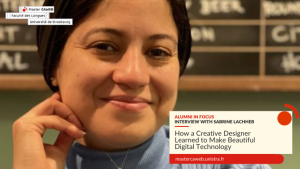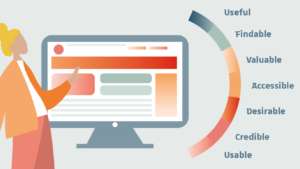Open data: a gold mine for innovation, research and marketing
Open data is a concept that at first glance may seem vague to you, but can be extremely useful, especially for companies, students, and lecturers, or for whoever knows how to use it. It only refers to data and should not be confused with ‘open source’, which is a term representing the right of control over algorithms and software.

What is open data?
Open data is defined as data that is freely accessed, shared and used online. Datasets on open data serve as the basis of information for all file types (spreadsheets, texts, photos, videos, audios, etc.). A piece of “open” data must be easy to access and easily reusable by a machine (with the help of an API, for example).
In France, this principle is often associated with public service and administration, and is based on Article 15 of the Declaration of the Rights of Man and of the Citizen, which states that, “Society has the right to ask a public official for an explication of his management and supervision”. Since the 2000s and the emergence of the Internet, the European Union has been encouraging people to make this data directly available online for easily accessible.
The Government and several cities in France are the precursors of this initiative and have offered a large number of datasets (close to 36,000 for the government website data.gouv.fr) that are reused by platforms such as Wikipedia, Google Maps and even journalists.
Data that’s been made public can therefore be exploited at no charge with the purpose of extracting information that can be monetized for value creation or innovation.
But in practical terms, what do we find in open data?
It covers an extremely vast number of subjects, from the figures of the Covid-19 epidemic, to the number of companies affiliated to a particular sector or the attendance of your favorite media library.
We also can find useful datasets on weather (ex. weather forecasts from Météo France), politics (ex. deliberations by city councils), demography (INSEE’s analysis in France), economy (2024 budget for France’s Journal Officiel), environment (biodiversity observations) and on many others.
It is an essential resource for creating transparency in our administration and democracy, but not all information should be disclosed. This is why the data in open data must be made anonymous, must not harm copyright or national defense laws, and must not discriminate against any social sector.
Can I use it in my everyday life?
All data provided in open data’s public services are not subject to any licenses and can therefore be freely exploited by anyone who would like to use it.
It opens the door to innovation, value creation, research or even helps facilitate citizen’s daily lives. Open data authorizes, for example, applications such as Google Maps or Waze to collect national information concerning road traffic to provide more comprehensive services to their users and to monetize this information. They also simplify the collection of marketing data in order to gain an awareness of the competition within a geographical area or to find out a population’s consumption habits. It is a tool that can be useful when creating a business or for commercial development.
In addition, they have real potential for academic research, which is valuable for both students and lecturers who are looking for global data to write and support a dissertation, a thesis or even a simple presentation.
Nevertheless, they can be utilized by anyone on a daily basis. In Strasbourg, France, the Eurométropole’s open data platform allows you, among other things, to find out the attendance of swimming pools or media libraries within 5 minutes, or the number of bicycles available at a Vélohop station on the corner of your street, and even the number of parking spots available in the city. All so you can arrange your ideal schedule and your next outing!
If you want to know more about the use of open data, we recommend exploring this free online workshop made available by the European Community, as well as these following sources:
Article written by Justine Alves







